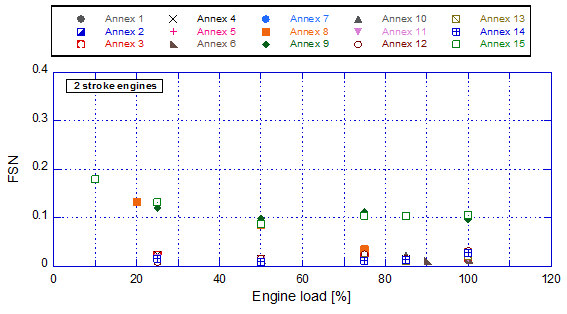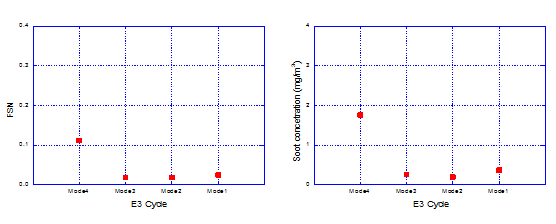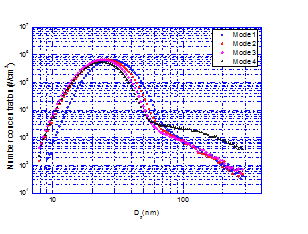 KR Webzine Vol.130
KR Webzine Vol.130
- Dec. 2021
- Nov. 2021
- Oct. 2021
- Sep. 2021
- Aug. 2021
- Jul. 2021
- Jun. 2021
- May. 2021
- Apr. 2021
- Mar. 2021
- Feb. 2021
- Jan. 2021
- Dec. 2020
- Nov. 2020
- Oct. 2020
- Sep. 2020
- Aug. 2020
- Jul. 2020
- Jun. 2020
- May. 2020
- Apr. 2020
- Mar. 2020
- Feb. 2020
- Jan. 2020
- Dec. 2019
- Nov. 2019
- Oct. 2019
- Sep. 2019
- Aug. 2019
- Jul. 2019
- Jun. 2019
- May. 2019
- Apr. 2019
- Mar. 2019
- Feb. 2019
- Jan. 2019
- Dec. 2018
- Nov. 2018
- Oct. 2018
- Sep. 2018
- Aug. 2018
- Jul. 2018
- Jun. 2018
- May. 2018
- Apr. 2018
- Mar. 2018
- Feb. 2018
- Jan. 2018
- Dec. 2017
- Nov. 2017
- Oct. 2017
- Sep. 2017
- Aug. 2017
- Jul. 2017
- Jun. 2017
- May. 2017
- Apr. 2017
- Mar. 2017
- Feb. 2017
- Jan. 2017
- Dec. 2016
- Nov. 2016
- Oct. 2016
- Sep. 2016
- Aug. 2016
- Jul. 2016
- Jun. 2016
- May. 2016
- Apr. 2016
- Mar. 2016
- Feb. 2016
- Jan. 2016
- Dec. 2015
- Nov. 2015
- Oct. 2015
- Sep. 2015
- Aug. 2015
- Jul. 2015
- Jun. 2015
- May. 2015
- Apr. 2015
- Mar. 2015
- Feb. 2015
- Jan. 2015
- Dec. 2014
- Nov. 2014
- Oct. 2014
- Sep. 2014
- Aug. 2014
- Jul. 2014
- Jun. 2014
- May. 2014
- Apr. 2014
- Mar. 2014
- Feb. 2014
- Jan. 2014
- Dec. 2013
- Nov. 2013
- Oct. 2013
- Sep. 2013
- Aug. 2013
- Jul. 2013
- Jun. 2013
- May. 2013
- Apr. 2013
- Mar. 2013
- Jan. 2013
- Dec. 2012
- Nov. 2012
- Oct. 2012
- Sep. 2012
- Aug. 2012
- Jul. 2012
- Jun. 2012
- May. 2012
- Apr. 2012
- Mar. 2012
- Feb. 2012
- Jan. 2012
- Dec. 2011
- Nov. 2011
- Oct. 2011
- Sep. 2011
- Aug. 2011
- Jul. 2011
- Jun. 2011
- May. 2011
- Apr. 2011
- Mar. 2011
- Feb. 2011
- Jan. 2011
- Dec. 2010
- Nov. 2010
- Oct. 2010
- Sep. 2010
- Aug. 2010
- Jul. 2010
- Jun. 2010
- May. 2010
- Apr. 2010
- Mar. 2010
- Feb. 2010
- Jan. 2010
- Dec. 2009
- Nov. 2009
- Oct. 2009
- Sep. 2009
- Aug. 2009
- Jul. 2009
- Jun. 2009
- May. 2009
- Apr. 2009
- Mar. 2009
- Feb. 2009
- Jan. 2009
- Dec. 2008
- Nov. 2008
- Oct. 2008
- Sep. 2008
- Aug. 2008
- Jul. 2008
- Jun. 2008
- May. 2008
- Apr. 2008
- Mar. 2008
- Feb. 2008
12
December 2018
- Survey 2018
-
KR Inside
- KR’s SeaTrust-HullScan software wins 2018 Tanker Safety Award
- KR and Swiss Climate EcoCare GmbH sign MoU for IMO DCS service
- KR publishes BWMS technical information for ship-owners and surveyors
- KR signs MoU with Hyundai Heavy Industries for LNG-fueled vessel
- KR Maritime Cyber security newsletter
- Bespoke technical seminars for clients
- KR survey site news
- KR R&D Trends
-
Technical News
- Announcement of results of MEPC 73 relating to the implementation of Data Collection System for ship fuel use and recommendations for submission of SEEMP Part II
- Exhaust Gas Cleaning System
- Application of Ballast Water Management Convention – Using brine as a refrigerant in seagoing fishing vessels
- Port state control detentions
1. Overview
The International Maritime Organization (IMO) implements regulations to protect the marine environment in the international maritime industries. Recently, the regulations regarding air pollution emitted from ships have been strengthened. In addition to major regulated air pollutants such as nitrogen oxides and sulfur oxides, particulate matter is indirectly regulated by limiting the sulfur content in marine fuel, and the regulation of black carbon(BC) in particulate matter is regulated through Pollution Prevention and Response(PPR). The IMO’s Marine Environment Protection committee has agreed a definition for black carbon emissions for international shipping, based on the physical properties proposed by Bond et al. during the 68th session. After defining black carbon as a regulated substance, and to establish its measurement, the committee requested member states undertake voluntary measurement studies. As a result the measurement and analysis of black carbon emitted from a low speed two-stroke engine, which is used as the main propulsion engine of the ship, has been conducted using the low speed engine test bed for green ship, at KR’s Test and Certification Centre.
2. Methods for measuring black carbon from ship emissions and its characteristics
Black carbon which is regulated by IMO, is a carbon-based material that is formed only in flames during the combustion process of carbon-based fuels. It’s physical characteristics are as follows.
1) it strongly absorbs visible light with a mass absorption cross section of at least 5 m2/g at
a wavelength of 550 nm,
2) it is refractory; that is, it retains its basic form at very high temperatures, with a
vaporization temperature near 4000 K,
3) it is insoluble in water, in organic solvents including methanol and acetone, and in other
components of atmospheric aerosol, and
4) it exists as an aggregate of small carbon spherules.
The Filter Smoke Number(FSN), Photo-Acoustic spectrometry(PAS), Laser Induced Incandescence(LII) are all considered to be measurement methods of the physical properties of black carbon. Among the measurement methods, FSN which does not require air dilution and PAS which has relatively low air dilution ratios are the main preferred methods.

[Fig. 1. Principle of filter smoke number and photo-acoustic methods]
The PPR requests the results of the voluntary measurements of black carbon by each member state, and as a result each member state and EUROMOT provide the results of their black carbon measurement from marine engine test beds and ships, using the black carbon measurement protocol. EUROMOT presented the results of the measurement of BC from 31 marine engines (low & medium-speed) by FSN method on PPR agenda (PPR 4/9). Among the results, the emission characteristics of BC from the low-speed engine were 0.009 to 0.179 FSN.

[Fig. 2. FSN values from two-stroke diesel engine]
3. Measuring black carbon emitted from low speed 2 stroke marine engines

[Fig. 3. Low speed engine test bed and experimental setup, a) photograph of low speed engine test bench at KR TCC, b) schematic diagram of experimental setup]
Following the request to voluntarily measure black carbon, KR measured the black carbon emitted from a low-speed two stroke engine used as the main propulsion engine of an ocean going vessel, using a low speed engine test bed in the Green Ship TCC. In this study, two stroke marine diesel engine with a rating of 7,400 kW at 129 rpm was used for analyzing black carbon.
It was coupled to a hydraulic dynamometer to modulate load. This study was carried out under four steady-state conditions of NTC 2008 and ISO 8178 E3 cycle (test cycle for propeller-law-operated main and propeller-law-operated auxiliary engines) and bunker A (0. 3%) was used. To evaluate the emission characteristics, the black carbon was measured with a smoke meter (415 SE, AVL) and Micro soot sensor (MSSplus, AVL. The FSN measurement range of the smoke meter is 0 ~ 10, which means the the higher the FSN, the higher the emission of black carbon.
The concentration of different particle sizes emitted from the low speed engine was also measured with a scanning mobility particle sizer(TSI) and with a diluter(DEED, Dekati).
[Table. 1. Experimental conditions]
|
Power [kW] |
7,400 |
5,500 |
3,700 |
1,850 |
|
Speed [rpm] |
129.0 |
117.2 |
102.4 |
81.3 |
|
Torque [kNm] |
547.8 |
452.2 |
345.0 |
217.3 |
|
Mode |
1 |
2 |
3 |
4 |

[Fig. 4. FSN and soot concentration values of 2-stroke marine engine]
The results revealed that the FSN and soot concentration under 4 Mode (25 % load) condition was the highest value. The results showed similar characteristics as the results presented in EUROMOT. It seems to be attributable to the characteristics of the low-speed two-stroke engine for ships that supplies combustion air using the auxiliary blower in the low load condition. In addition, some of EUROMOT's measurement results showed BC emission characteristics somewhat higher than this result, which seemed to be as a result of the use of high sulfur fuel (2.4% S).
In addition, the number concentration of particle size emitted from 2-stroke low-speed engine were measured using SMPS. The results revealed that the particle number distribution in the accumulation mode (Dp > 50nm) in mode 4 was higher than that in other modes. The results of the black carbon measurement using FSN and PAS methods under the same operating conditions, showed higher FSN values and soot concentration under low-load operating conditions. It seemed that this was because the number concentration was increased where the particles were relatively large. It was also caused by the fact that relatively rich fuel and combustion air injected inside the combustion chamber formed relatively large particles under low load condition during the combustion process, compared to higher load conditions.

[Fig. 5. Particle size distribution for 2-stroke marine engine]
In the case of the low-speed two stroke engine for the main propulsion of the ship, it was possible to confirm a measurement value (below 0.5) lower than 10% of the maximum measurable FSN of the equipment. However, when the black carbon regulation is enforced, an additional aftertreatment system to reduce black carbon further can be applied.
The FSN value measured downstream of the aftertreatment system can indicate the minimum measurement value of instrument and it can verify the reliability of the measurement. Therefore, if the FSN method is established as a representative measurement method for black carbon, it will be necessary to modulate the measurement range or fine tune low the FSN measurement value in consultation with related organizations such as member states and the instrument manufacturer.


